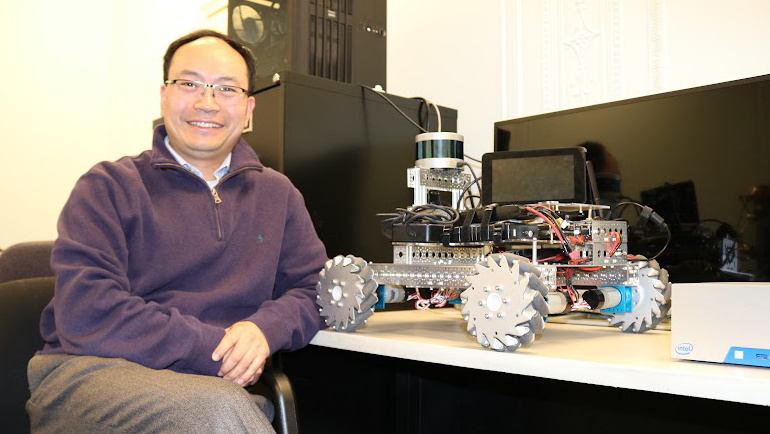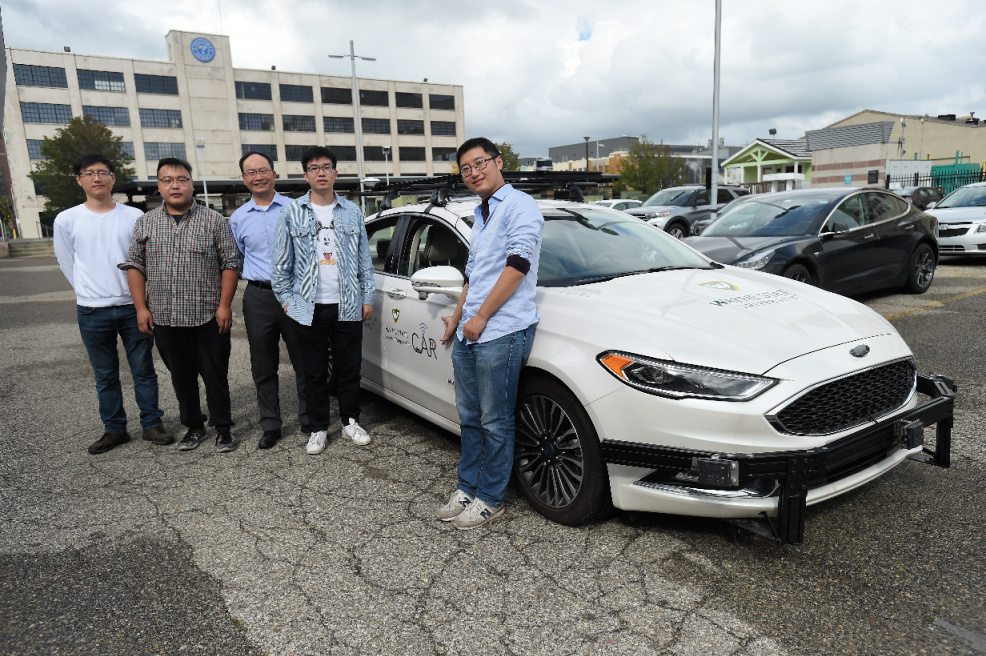
Weisong Shi, professor and interim chair of computer science in Wayne State’s College of Engineering, has been recognized by Crain’s Detroit Business as a notable leader in electric vehicles. Shi, who is also a Charles H. Gershenson Distinguished Faculty Fellow and leads the Wayne Mobility Initiative and the Connected and Autonomous Research Laboratory, is the only academic on the prestigious list.
A global leader in edge computing research, Shi’s work has influenced automotive, technology, health care and energy. His students graduate in demand and are leaders at companies in Detroit and around the world, including General Motors Co., Ford Motor Co., Stellantis, Microsoft, Google, Siemens AG, Intel, IBM, Nokia Corp., Volkswagen and more.
Shi shares his perspective on rapidly evolving technology, the future of mobility and teaching the next generation of engineers:
What excites you about the mobility industry right now?
If you think about the history of the last century, Detroit has been the Motor City. Since the Model T, this city has been leading automotive innovation at a global level. When you think about a vehicle now, it’s not just a vehicle anymore: It’s a computer with wheels, so I see we’re at the point where we’re looking at the concept and an era driven by vehicle computing. Now, all the vehicles come with a host of sensors — all of those things were initially for autonomous driving. But with sensors already installed on vehicles, they can do so much more than just support autonomous function. They generate a huge amount of data. For example, one autonomous vehicle generates 4 terabytes of data daily — and today’s vehicles are going to be able to process that data in real time. With electrical vehicles now, too, computing and battery power are changing the way we view vehicles for the next century and beyond. A big wave is coming.
Beyond alerting drivers to hazards and promoting safety, how do those sensors help make driving safer?
Vehicle sensors can provide meaningful information in real time for cities and infrastructure about potholes, construction, accidents, even the health status of bridges, which makes it easier to manage traffic flow and roads. There are major implications for the delivery of goods, too.

How is Wayne State leading the change?
We’ve always valued the relationships between research, education and workforce development. They’re all connected. We were the first university nationwide to create an electrical vehicle engineering (EVE) master’s program in 2011. We also played a role in helping companies, like Magna, retrain their current workforce, who were used to working with traditional gasoline-fueled internal combustion engines. We launched the Mobility Academy to help companies retrain their workforces — and our first customer was the National Highway Traffic Safety Administration. The Mobility Academy continues to grow and attract interest from companies locally and globally.
How has training engineers changed with changes in technology?
Companies want engineers who understand how these new autonomous or electrical vehicles are built — and, more importantly, how the technology serves as a tool for the vehicle to communicate. At the College of Engineering, in the last decade, we started several college-level interdisciplinary master’s programs that have different concentration tracks that share common courses to address current and future industry needs, including EVE, data science, robotics and artificial intelligence. We have a responsibility to the students and to the industry to stay ahead of the curve.
How has that approach worked for engineering graduates entering the workforce?
Students often seek out our program because we’re in the Motor City and because we’re ahead of the trends. Our graduates are well-rounded and extremely marketable because they’ve been trained in the foundations and the future of engineering. They’re graduating with multiple offers. I’ve had several companies ask me how many students I have working in my lab, and if they can hire them all!
Why should people outside of the industry know about mobility?
Everyone plays a part in it! The university’s leadership launched the Wayne Mobility Initiative in February 2020, and we have more than 60 faculty from across disciplines who come together. We want — and need — to think about mobility from multiple perspectives: How can we make solutions that work for the community? How do we best use new technologies? What are the environmental impacts? There are so many perspectives, and mobility touches everything.
Learn more about Shi’s work at weisongshi.org.
